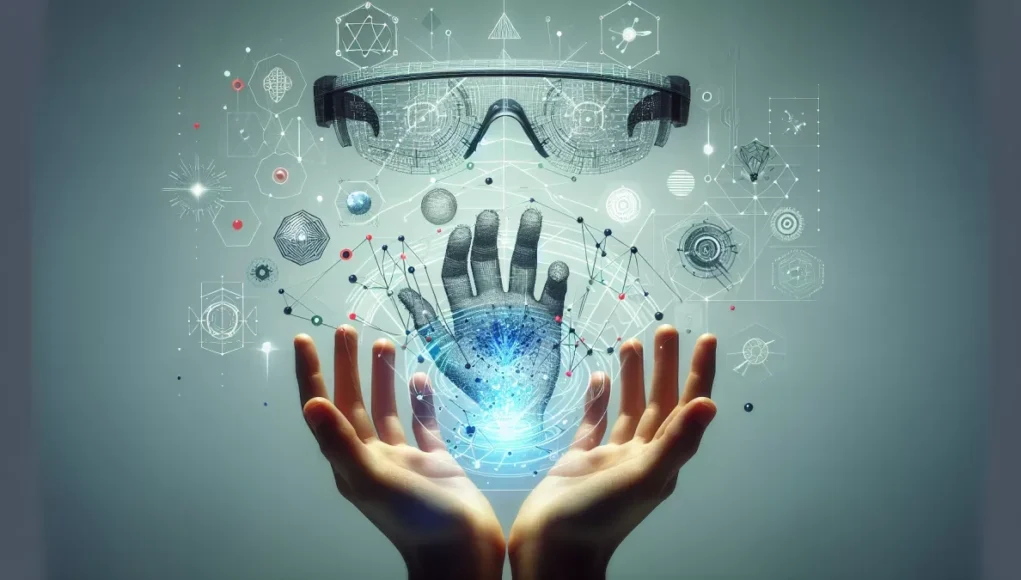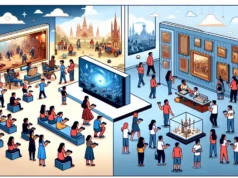As we immersively traverse the orbit of technology, one neck turning phenomenon holding the prism to refract the light of imagination is Augmented Reality (AR). Like a master sculptor moulding reality, AR superimposes digital elements onto our physical environment, subtly blurring the boundaries between the virtual and real worlds.
Conceptualized back in the early 1990s, AR has been steadily collecting speed and significance over the past few years. The technology, once largely confined to the realm of gaming, such as the worldwide phenomenon Pokemon Go, has now advanced to the point that it’s reshaping industries – from education and healthcare to retail and tourism, AR is everywhere.
Let’s delve deeper into this enchanting kingdom of AR for a closer look at the magic it unfolds, and how it’s steadily merging digital content with the physical world.
Championing AR’s significance, Google’s Principal VR/AR Advocate, Nathan Martz, shed light on Acquilian, an AR start-up Google acquired in 2014. The acquisition laid the groundwork for ARCore, Google’s platform for building AR experiences. ARCore uses three key technologies to integrate virtual content with the real world – motion tracking, environmental understanding, and light estimation.
Take Google Maps for instance. The ‘Live View’ AR feature places virtually rendered arrows and street names right onto the user’s live real-world view. This merger of digital and physical makes navigating unfamiliar spaces not only effortless but also engaging—a truly valuable asset in today’s fast-paced world.
On the educational front, AR is developing into a dynamic tool for interactive learning. Google Expeditions AR lets students engage in hands-on learning by dropping virtual objects into the physical world. Students can explore a simplified model of the human heart or walk around the solar system as if they’re Mariana Trench deep in space, creating more effective and inclusive learning experiences.
Medical professionals also gain pivotal benefits from AR’s unique capabilities. Surgeons can view patient’s medical imaging data directly on their body during surgery, reducing the need to shift focus from the patient to a screen. Google Glass’s Enterprise Edition 2, for example, offers a heads-up, hands-free device that intuitively displays information in the user’s line of sight—making it a valued resource in complex medical procedures.
AR’s prowess has also been felt in the field of art and heritage preservation, where historical sites and artwork, otherwise inaccessible, can be virtually explored and examined in incredible detail. Google Arts and Culture’s ‘Art Projector’ allows users to see how artworks look in real size right in front of them, bringing together the allure of art and the convenience of AR.
Moreover, AR is revolutionizing retail by allowing customers to preview products virtually in their own homes before deciding to buy them. IKEA Place, an app developed using ARCore, lets users virtually place IKEA products in their space to see how they would look and fit. This digital-physical blend of shopping empowers customers with the information needed for confident purchases and also reduces the likelihood of returns.
Though the transformative power of AR has exceptionally widened its influence over multiple domains, it’s important to remember that we are still in the early days of this technology’s potential. With major tech giants including Google and Apple heavily investing in the further development of AR, the future of integrating the digital with the physical looks exceptionally bright and full of untapped potential.
And as we step into this blended space of reality, we embrace the magic that Augmented Reality unfurls- creating the extraordinary out of the ordinary, expanding our senses, and forever changing the way we perceive and interact with the world around us.
SOURCES:
[1] Google AR & VR: https://vr.google.com/ar/
[2] Google Developers Blog: https://developers.googleblog.com/2018/02/announcing-arcore-10-and-new-updates-to.html
[3] Google Maps Live View: https://support.google.com/maps/answer/9073016?hl=en
[4] Google Arts & Culture: https://artsandculture.google.com/project/art-projector
[5] Wear OS by Google (Google Glass): https://www.google.com/glass/start/
[6] IKEA Place: https://www.ikea.com/us/en/customer-service/ikea-place-app-pub52cbf330






